Review for Doctor Lautrec and the Forgotten Knights
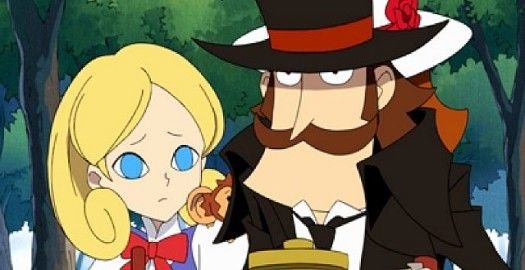
If you followed the pre-release build-up to Konami’s Doctor Lautrec and the Forgotten Knights, you’ll likely be surprised at the end result of this Nintendo 3DS adventure. In fact, it seems that even the publisher wasn’t aware of what kind of game it is. All marketing material, whether screenshots, trailers, press releases, and even the back of the game case, have all focused on the Professor Layton-like story and puzzles, yet failed to mention that a large part of the gameplay consists of turn-based monster battles. Don't let that worry you, as this is still very much a substantial puzzler, but it does have plenty of lite RPG and strategy elements mixed in with its more traditional adventure elements.
The game is set in Paris at the end of the 19th century, around the time the Eiffel Tower was built for the 1889 World's Fair. Doctor Lautrec is a professor of archeology at the Museum of Natural History, and he has recently heard of an underground system of dungeons beneath the city, where large quantities of treasure are rumoured to be waiting for any daring adventurer to discover them. The rumours also say that the treasures are somehow alive and dangerous, and many adventurers never return from the depths below the City of Light. This so-called "Treasure Animatus" could very well be the lost treasure of Louis XIV, the Sun King, a ruler of the famous Bourbon dynasty. One day a girl named Marie enters Lautrec’s office and asks questions about an object that has been in her family for centuries and is somehow connected to the Bourbon dynasty as well. Intrigued, Lautrec and his assistant Sophie set out to the local tavern, whose owner sells treasure maps to the dungeons, and soon they are on their way. What follows is a rich but strange journey through catacombs and sewers, filled with guards, puzzles, monsters and crates. Lots and lots of crates.
Each quest starts at the tavern and follows more or less the same procedure. After speaking to Milady, Lautrec obtains a map and starts unravelling its riddle, because the maps are not simply street plans with an X that marks the spot. Instead, each map consists of a cryptic description of a location in Paris, sometimes accompanied by a drawing, and Lautrec and Sophie need to figure out where it is pointing. This is usually done in a complicated exchange of theories between the doctor, who is far more intelligent and experienced, and the young girl just learning the ropes, who can offer a fresh angle to some problems. Most of the time, Lautrec's reasoning makes sense and you can understand where he's going with his explanation, but sometimes his theories flew completely over my head. As you have no influence at all over how this plays out, you can feel a bit left out at this point, leaving you simply pressing a button to progress the exchange.
When the two are done discussing the riddle, a map of Paris is displayed with a number of possible locations marked on it. Your task is to visit the correct one by guiding Lautrec around the simplistic top-down view of the city with the circle pad. If you've been paying attention and know where to look, you can go straight there, saving a bit of wandering aimlessly about. But you can also stop anywhere along the way and enter the street for a nicely done 3D stylized view of it, and there is even an encyclopedia of sorts with pictures and both historical and current information about hundreds of buildings in Paris. This is of no use whatsoever for the game, but it is an example of how much detail the developers have provided.
If you have no idea which location is the correct one, you can just visit each option in turn, eliminating the incorrect ones by talking to people you find there (they will give you new clues about the riddle or tell you they have never heard of such-and-such). There are hundreds of people in the streets of Paris, but they all look alike as there are only a handful of different character models, which is a bit of a let down. You can talk to them all, but most will have nothing to say that relates to your quest. Those who do have an exclamation mark above their heads, but even they mostly have nothing to add. In fact, most of the time none of the initial locations are correct, and talking to all the people only leads to Lautrec having to re-examine the riddle to come to a new conclusion. Once you have discovered the final destination, Lautrec and Sophie need to find the entrance to the dungeon by looking through binoculars. Scanning the buildings, you need to find a fleur-de-lis hidden somewhere, like in the decorations of an iron gate or on a chimney.
Once inside a dungeon, you begin to explore its several floors. This involves using either the circle pad or control pad to steer Lautrec around 3D environments that look nice but don’t offer much variety. Of course, the treasures aren't easy to obtain. In order to hinder your progress, there are many obstacles to overcome. Firstly, many of the rooms are guarded by patrolling police officers and/or knights. They follow a specific pattern that you can study to avoid them. Each has a limited line of sight, and in most dungeons the amount of time you have between passes is generous. Pressing the B button lets you move the camera freely, so you can study the whole room and see where the exits are. Other rooms have crates that you need to push, for instance to fill a gap in a traversable wall. Still others have fire flares, arrows being shot at intervals, rolling boulders or some kind of gas that makes you temporarily walk backwards. There are also puzzles involving a pressure plate that makes a bridge appear and disappear again after a while.
Some rooms have a combination of two or more obstacles. For example, you might need to avoid some guards while finding your way around a maze filled with pillars shooting fire arrows, or you'll have to push a crate into the path of a guard to make him change his pattern. They can't see you if you are behind a crate, even if you push it directly towards them. If you move too close to them, they will hear you, stop in their tracks for a second and look around (giving you plenty of time to get behind the crate or around a corner). If you do get spotted, they will catch you and escort you back to the entrance of the room, resetting the puzzle. This may sound like an extremely difficult timed exercise, but in reality it’s working out what to do strategically that is the challenging part. Only a few puzzles involve a great deal of timing, though it can be quite frustrating if you have been moving crates for twenty minutes only to get caught at the last moment because you were a little bit careless. Some rooms have narrow ledges over an 'abyss' that you can fall into, but you'll only end up on a lower floor, unharmed, with a handy staircase to climb back up. It actually pays to fall down on purpose sometimes, as there are often treasure chests in these locations, containing jewels that you can later use.
The system’s anaglyph 3D display can help a bit in estimating distance and angle for some puzzles, but for the most part the added dimension is merely cosmetic. You'll see Lautrec walking through the dungeon in 3D, making him stand behind walls or on top of ridges with real depth. The cutscenes are done in 3D as well, showing characters moving across a stereoscopic background. It does look great, but if you have trouble with the images it creates or get headaches, the game can be fully played if you keep the slider set all the way down to 2D, and you don't miss much if it’s switched off.
Ultimately, the dungeon maze leads to a chamber where the Treasure Animatus is located. This room is always protected by a puzzle on its door and can be recognized on the map by its shape. However, there are other chambers containing other treasures (also living and also protected by door puzzles). You don't need to capture those, but it can help if you do. Also, once you are back at the tavern, your "Reputation Score" is calculated and skipping any door puzzles will lower it considerably. These door puzzles can be divided into a few categories. There are logic puzzles in which you must choose the correct symbol to complete a sequence; spot-the-difference tasks using pictures of Parisian locations; a Minesweeper variant in which you recreate a picture by leaving or removing numbered tiles; a kind of three-dimensional jigsaw puzzle where you add blocks to fill a grid; and a sort of crossword where the words are already given but in French, leaving you to slot them correctly into the pattern.
Once the Treasure Animatus is discovered, it is time for the actual taming. Sophie can see the living spirit and announces to Lautrec what type it is. Using the stylus, you direct Lautrec to begin the taming by placing previously discovered treasures onto pedestals around the central 'egg'. The taming is a turn-based affair, based on a complicated set of rules akin to rock-paper-scissors but with five elements. The distance from the pedestal to the treasure and the amount of damage to it are factored in, and some treasures influence each other when placed close together. These rules aren't explained very well in either the game or the manual, but it's not really important as you can mostly get by with trial and error. As long as you regularly change the treasure you take into the dungeon to the ones you acquired recently (by default the strongest available), you should be fine.
As Lautrec, you must place one treasure or jewel onto a pedestal to 'attack' the central treasure, which is damaged in the process. Status bars indicate the amount of hit points, defence and attack power the treasure has, and the goal is to get a pointer in the red zone without reducing the hit points all the way to zero, as that will 'extinguish' the treasure. Your own treasure can in turn be damaged and even 'killed' by the opponent. If that happens, it can still be brought back to life if you've bought a special stone from the tavern shop. As there are separate resurrection stones for each elemental spirit, if you've brought the wrong type or you think you might want to use your stone later on, it might be better to restart the taming and use different treasures. If the treasure you brought along isn't strong enough, you might want to search the dungeon further for more jewels or other treasure, or start the whole dungeon anew with a different set of treasure. You will need to redo all the puzzles if you leave a dungeon without taming the main treasure, however.
After taming the Treasure Animatus, you are automatically transported back to the tavern, where you are treated to a cutscene followed by Milady telling you how well you did based on how many hints you needed for the puzzles and how many non-essential treasure rooms you found. There you’ll also get the chance to buy resurrection stones or special treasure items with the reputation score and jewels you collected. For the special treasure items you need to collect lots of rare jewels, which is a bit odd, because by the time you have solved enough quests to have the required amount, the treasure you can buy is hopelessly low in level compared to what you already have. Whenever you feel you’re suitably equipped, it's time to get another map and start the whole process anew.
As the principle is the same for each dungeon, the whole format of crate-shifting, avoiding guards, door puzzles and taming spirits gets a bit repetitive after a while. There are too few different kinds of puzzles to hold your attention for the dozens of hours this game can keep you occupied, but like with any handheld game, it is meant to be played in short bursts (for instance, a dungeon at a time, which can easily take an hour). What keeps the game fresh is the liberal amount of cinematics telling the story. You see, Lautrec is really not interested in treasure; he is only in it for the riddles and the secret behind the Treasure Animatus. Each of the 50 dungeons promises more information about the deeper mystery of why the treasure is alive and where it came from, but each time he is disappointed by not finding the ultimate answer.
Before and after every quest, and often while exploring the dungeons, dialogues and cutscenes provide answers to questions like how Sophie first met Lautrec, what the doctor has under his hat (which is inexplicably a monkey that sometimes comes out and offers a comic note by doing mischievous things or scaring off villains), who Marie is, and what secrets Milady keeps, along with many more anecdotes. We also get to meet some competitor adventurers like Vidocq, Claude and Gustav, some bad guys and a police officer, who all have their own background stories, quirks and mannerisms. This steady stream of story rewards really keeps you coming back for more and makes the game very addictive despite the repetitiveness of the treasure hunting itself.
The cinematics have a nice Japanese anime style, and they feature excellent voice acting. Apart from the initial riddle-solving when acquiring a new map, everything is fully voiced. Lautrec sounds like a British gentleman: aloof, serious, down-to-business and always correct. He has no time for such silliness as romance and doesn't have a clue that Sophie is harbouring secret fantasies of a romantic relationship with him. All voice actors are very good at conveying emotions and Sophie’s sighs and complaints whenever Lautrec is being his obnoxious self are convincing and funny. The game is accompanied by a soundtrack of nice French-sounding melodies on the surface, but inside the dungeons there is only a soft orchestral track occasionally broken by the sounds of crates scraping across the floor, flames flaring or boulders rolling, the voices of the guards if they catch you or Lautrec saying things like “oops” or “back to the drawing board” if he falls down a ledge or gets hit by something.
It may run on longer than in should, but Doctor Lautrec and the Forgotten Knights is an interesting blend of genres. The puzzles are the main ingredient, but the RPG and strategy elements are a nice addition even if the whole process does get a bit repetitive after a while. The story is generously conveyed through ongoing cinematics, and the ending leaves the option for a sequel wide open, so if the developer is able to create a fresh new angle to the dungeon exploring and taming parts of the game, this is another series that could very well become a popular adventure staple for Nintendo 3DS owners.











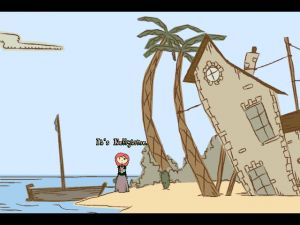

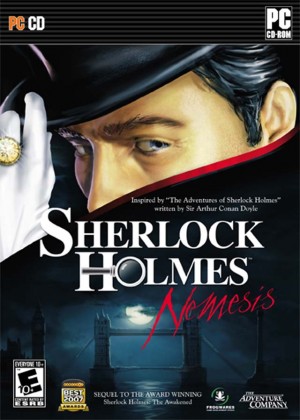

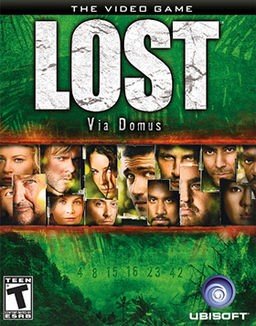
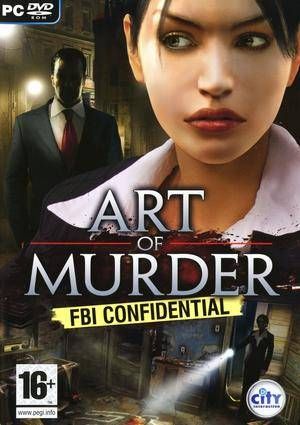

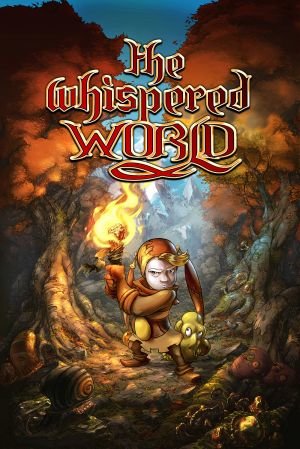
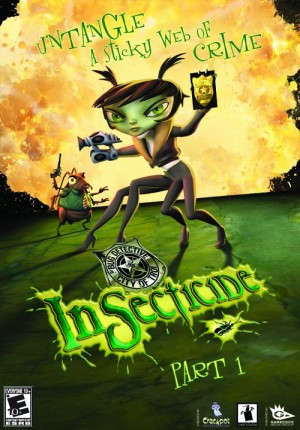


__small.jpg)








